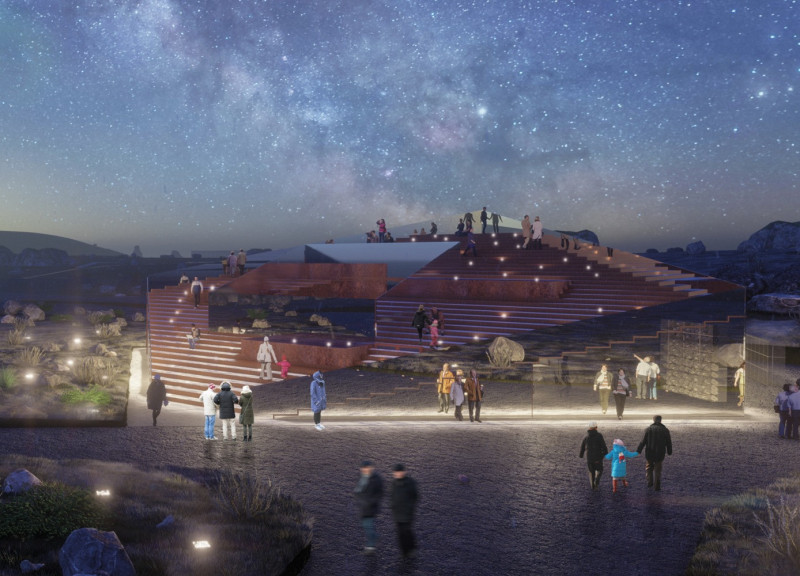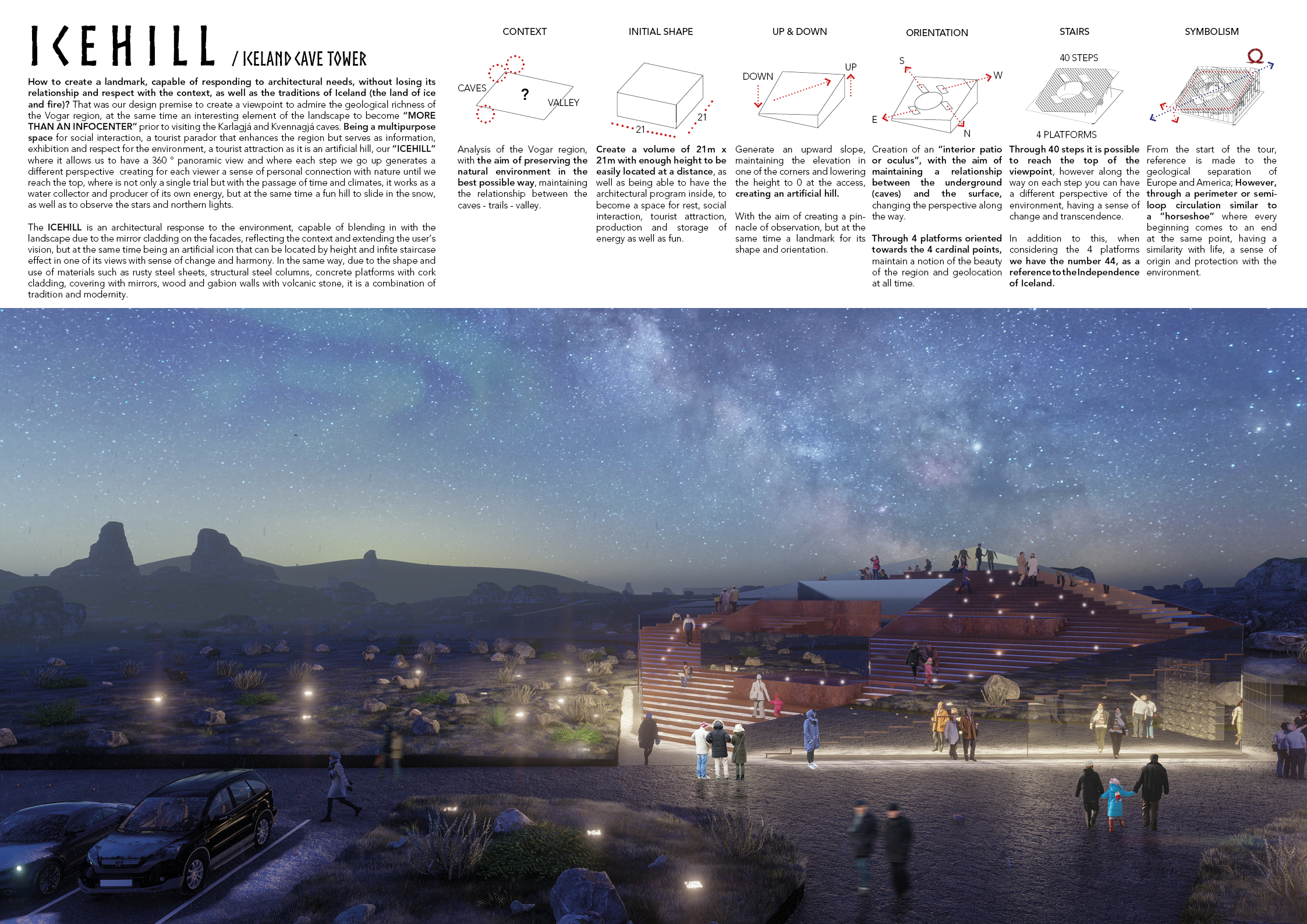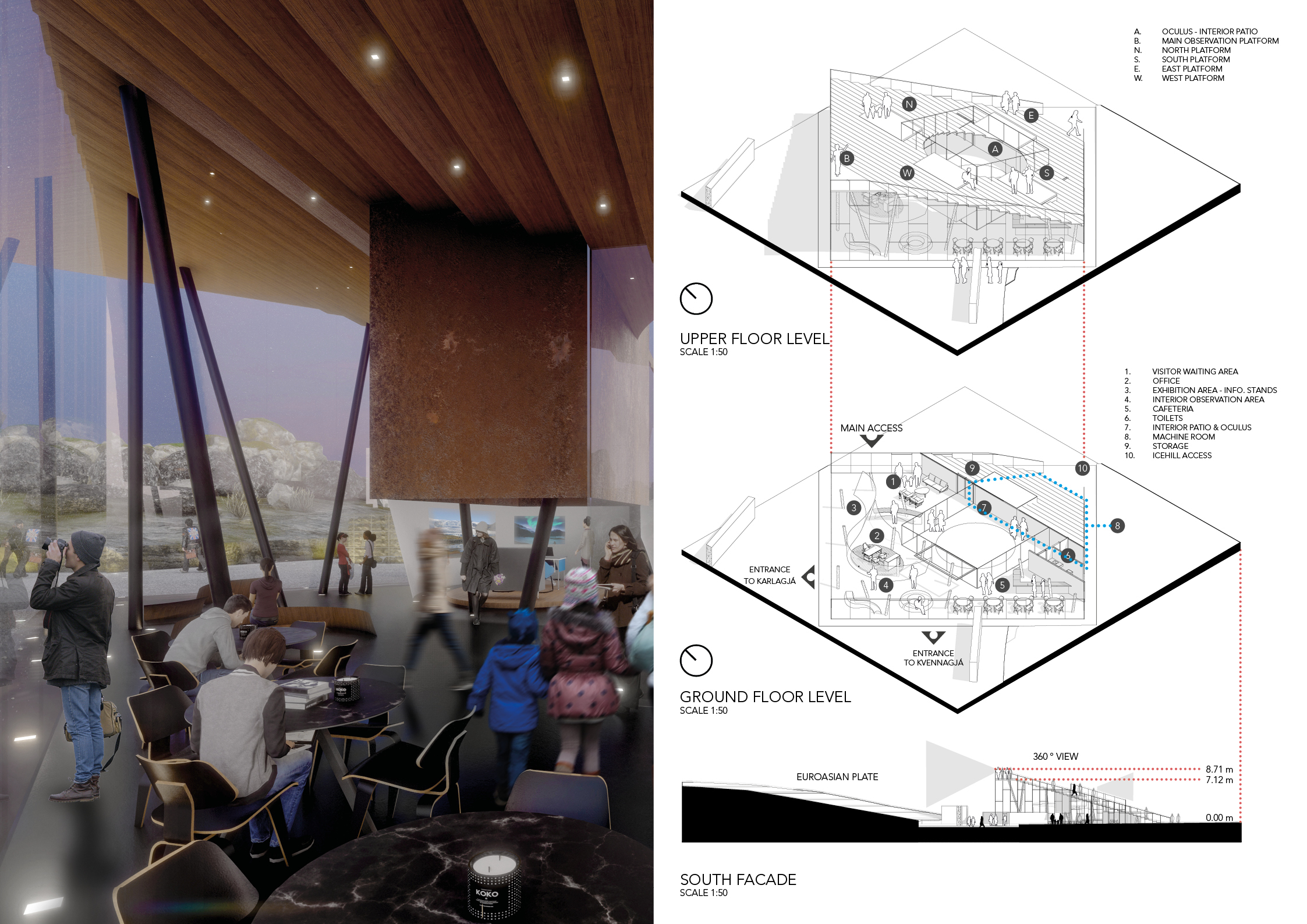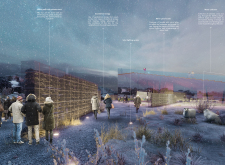5 key facts about this project
At its core, the project represents a harmonious balance between form and function. Designed to serve a multi-faceted role, the building addresses the diverse needs of its inhabitants while maintaining an inviting and warm atmosphere. The carefully considered layout promotes ease of movement and interaction among users, encouraging engagement with both the internal spaces and the surrounding landscape. The architecture embodies the idea of community, prioritizing spaces that foster connection and collaboration.
The materials chosen for the project are integral to both its visual appeal and its functional performance. The primary materials used in the construction include natural stone, glass, steel, and sustainable wood. Natural stone adds an element of permanence and solidity, while large glass panels enhance transparency, allowing for natural light to permeate the interior spaces. Steel provides structural support and adds a modern touch, indicating both strength and stability. Meanwhile, sustainable wood not only contributes warmth and texture but also aligns with the project’s commitment to environmental responsibility. This careful selection of materials enhances the building's overall sustainability, promoting energy efficiency and reducing the ecological footprint.
Significant architectural elements contribute to the building's unique character. The façade, for instance, showcases a dynamic interplay of textures and materials that invite curiosity and engagement. Angled overhangs serve both functional and aesthetic purposes, providing shade and adding dimensionality to the exterior. Inside, the ceiling features exposed beams and an open plan that enhances the sense of spaciousness and fosters a feeling of intimacy within larger communal areas. The use of soft color palettes throughout the interior spaces creates a calming environment, ensuring that the building remains a refuge for its users.
The innovative design approaches employed are especially noteworthy. The project employs passive solar strategies, incorporating elements such as strategically placed windows and shading devices that optimize natural light while minimizing heat gain. This not only enhances the building's energy efficiency but also creates a comfortable indoor climate year-round. Additionally, the layout promotes natural ventilation, allowing for fresh air circulation without the need for mechanical systems. This design philosophy prioritizes the well-being of its occupants while minimizing reliance on external energy sources.
One of the standout features of the project is its relationship with the surrounding environment. The architecture is designed not merely to exist within its context but to engage with it in meaningful ways. Outdoor spaces are seamlessly integrated, creating inviting areas for gathering and recreation. Landscaping is thoughtfully curated, featuring native plants that require minimal maintenance and maximize local biodiversity. This not only enriches the aesthetic experience but also reinforces the project’s commitment to sustainability.
Every aspect of this architectural endeavor has been carefully considered to reflect an overarching vision that emphasizes utility without compromising on elegance or environmental responsibility. It is an exemplary model of how thoughtful design can facilitate community interaction, promote sustainability, and respond effectively to the needs of users.
For further exploration of the project, consider delving into the architectural plans, sections, and designs that provide deeper insights into the nuanced decisions that shaped this exceptional work of architecture. Investigating these elements will reveal the intent and creativity that underpin the project, enhancing appreciation for the design’s comprehensive approach to contemporary architectural challenges.


























